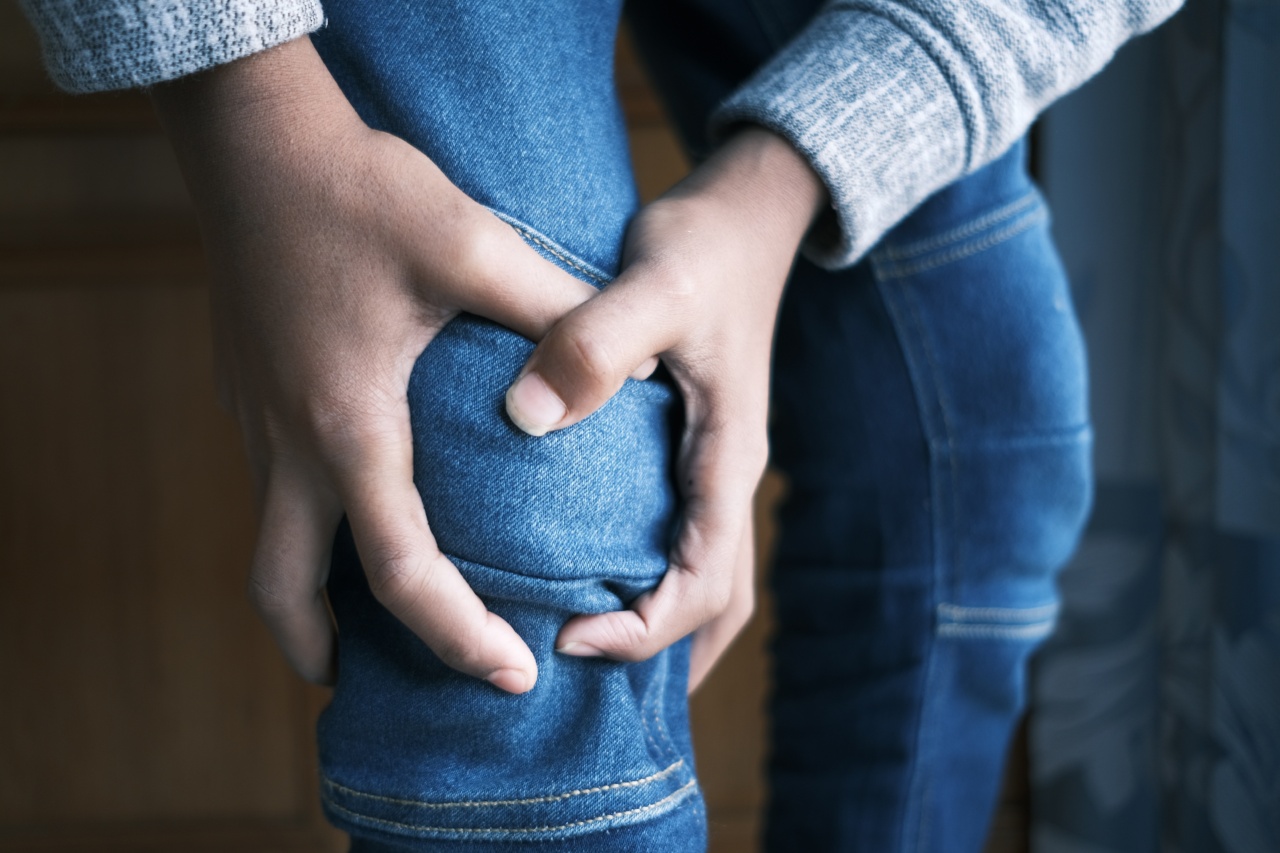Knee pain is a common complaint that affects people of all ages. It can occur suddenly as a result of an injury, or it may develop gradually due to wear and tear on the joints.
Whatever the cause, knee pain can be debilitating and impact your daily activities. In this article, we will discuss the common causes of knee pain and various treatment options available.
1. Osteoarthritis
Osteoarthritis is one of the leading causes of knee pain, especially in older adults. It is a degenerative joint disease that occurs when the protective cartilage in the knee joint wears down over time.
This leads to pain, swelling, and stiffness in the knee. Treatment options include pain management medications, physical therapy, and in severe cases, surgery.
2. Knee Injuries
Acute knee injuries, such as sprains, strains, and ligament tears, can cause sudden and severe knee pain. These injuries often occur during physical activities or sports.
Treatment depends on the type and severity of the injury and may include rest, ice, compression, elevation (RICE), pain medication, physical therapy, or surgery if necessary.
3. Tendonitis
Tendonitis is the inflammation of the tendons in the knee, usually caused by overuse or repetitive motions. It causes pain, swelling, and tenderness around the affected area. Rest, ice, compression, and elevation can help relieve symptoms.
Physical therapy, anti-inflammatory medications, and corticosteroid injections may be recommended for more severe cases.
4. Bursitis
Bursitis occurs when the bursae, small sacs filled with fluid that cushion the knee joints, become inflamed. This inflammation leads to knee pain and swelling. Rest, ice, and NSAIDs (nonsteroidal anti-inflammatory drugs) can help relieve symptoms.
If the bursitis is persistent, a doctor may recommend physical therapy or corticosteroid injections.
5. Meniscus Tears
The meniscus is a rubbery cartilage in the knee that acts as a shock absorber. It can tear due to sudden twisting or pivoting movements, causing pain, swelling, and limited mobility.
Treatment options include rest, ice, compression, physical therapy, and surgery in severe cases.
6. IT Band Syndrome
IT (iliotibial) band syndrome occurs when the IT band, a thick band of tissue that runs along the outside of the thigh, becomes inflamed. This can cause pain on the outside of the knee.
Rest, stretching, and physical therapy exercises can help alleviate symptoms. In some cases, corticosteroid injections may be necessary.
7. Patellar Tendinitis
Patellar tendinitis, also known as jumper’s knee, is an overuse injury that affects the tendon connecting the kneecap to the shinbone. It causes pain and tenderness at the front of the knee.
Treatment usually involves rest, ice, compression, physical therapy, and pain medication. Severe cases may require corticosteroid injections or surgery.
8. Gout
Gout is a form of arthritis that occurs when uric acid crystals build up in the joints, including the knee joint. This can lead to sudden and intense pain, swelling, and redness.
Medications to reduce inflammation and manage pain, lifestyle changes, and dietary modifications are common treatments for gout.
9. Rheumatoid Arthritis
Rheumatoid arthritis is an autoimmune disease that causes chronic inflammation in the joints, including the knees. It can lead to pain, stiffness, swelling, and joint deformity.
Treatment typically involves a combination of medication, physical therapy, and lifestyle modifications to manage symptoms and slow down the progression of the disease.
10. Overuse and Muscle Imbalances
Overuse and muscle imbalances can put excessive stress on the knee joints and lead to pain. Activities that involve repetitive knee movements, such as running or jumping, can contribute to this condition.
Physical therapy, strengthening exercises, and modifying activities can help alleviate symptoms and prevent further damage.
Conclusion
Knee pain is a common issue that can significantly impact an individual’s quality of life. It is essential to identify the cause of knee pain to determine appropriate treatment options.
Whether the pain is due to osteoarthritis, an injury, or other underlying conditions, early intervention and proper management can help reduce pain, improve mobility, and prevent further damage to the knee joints.



























